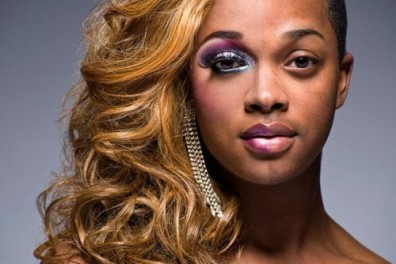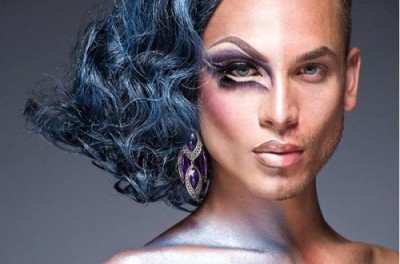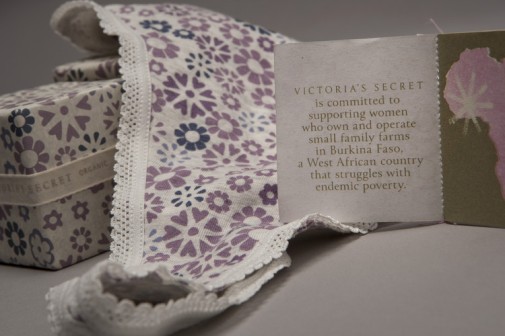Blog Entry #3
In his essay, “Of Mimicry and Man: The Ambivalence of Colonial Discourse,” Homi Bhabha introduces the concept of colonial mimicry as “the desire for a reformed, recognizable Other, as a subject of difference that is almost the same, but not quite” (Bhabha, 1984, p. 126). He argues that the colonizer desires to improve the “other” and make him similar to himself, but in a way that maintains a clear sense of the difference between them. The menace of mimicry is a double vision that disrupts colonial authority – in mimicry’s course of producing imitators rather than exact replications, the power of the colonizer is deconstructed and threatened.
In the clip from The Tyra Bank’s Show, Liz, a Korean-American woman, underwent a surgical procedure to increase the size of the fold on her eyelid. Although she admits she was teased as a child for being Asian and differing from atypical American standards of beauty, she attests she did not get the surgery to look more Caucasian, as Tyra suggests. She tells the audience that as a child she would look in the mirror and know that she was “very different from everybody else” and from what she knew “to be beautiful or pretty” (“Tyra Banks”, 2008, 1:56-2:11). Tyra turns to a doctor to ask why Asians feel that creased eyelids are prettier, to which he replies that it is a “Europeanization of beauty standards” (“Tyra Banks”, 2008, 6:03-6:06). Here, European ideals are seen as dominant, as – using Bhabha’s words – the colonizers.
Colonizers are dominant and represent the archetype that the colonial subjects should supposedly strive to reach. This suggests the desire for a uniform world free of “others” or those who deviate from the norms. As Tyra explains, her hair weave allows her to be one step closer to being a Caucasian woman, as that is society’s ideal. However, she will never be a white woman. She presents the binary of “ethnic erasing” versus “ethnic tweaking” (“Tyra Banks”, 2008, 5:19-5:24) which speaks to Bhabha’s idea of the same but different. Eyelid surgery creating a more Caucasian-looking eyelid allows Liz to appear more “white”, but this facade is only skin deep – she is still different. This discourse is problematic; it is a tease – you almost look like a white person, but not quite. The colonizer’s desire to create simulations represents the power they hold over those who are “othered”. It positions the colonizers as the expert teacher, and the colonial subjects as the students; however, no one is an expert, we are all students.
This desire to be part of the dominant group is rooted in our society. A French television show, “Dans la peau d’un Noir” (In the Skin of a Black Person), transformed a black family to be white, and a white family to be black, using pigments and wigs, in an effort “to illustrate that people are treated differently because of the colour of their skin” (Hall, n.d.). Further, an inspiring and compelling essay presented by The Washington Post paints the raw picture of what it is like to grow up as a black person in a white society. Lawrence Otis Graham writes of his and his wife’s upbringings as black children in a racist world, and outlines their efforts to do all they could to raise their children as similar as possible to that of a white child in New York. They divided their time between a suburban New York house and an apartment on Park Avenue, sent their children to a diverse private school, outfitted them in preppy clothing, taught them perfect diction, and embedded in them “that air of quiet graciousness” (Graham, 2014) in an effort to buffer their children against back stereotypes. Regardless of their extreme determination, their children were still marginalized for their race. Graham further attests that “through no fault of their own, many white men… are unaware of, or unappreciative of the white male privilege that they enjoy every day” (2014). Graham ends his essay with this: “As we observe each other and think that we have a close understanding of what it means to be black, white, Hispanic, Asian, male, female, rich or poor, we really don’t – and very often we find ourselves gazing at each other through the wrong end of the telescope. We see things that we think are there but really aren’t. And the relevant subtleties linger just outside our view, eluding us” (2014). Perhaps the “wrong end of the telescope” is the distorted view of “othering”, excluding, drawing a line between you versus me that is so prevalent (and so needing to be challenged) in our society.
To say that one gender, one race, one sexual orientation, is dominant, ideal, and “normal”, is obsolete, exclusive, and static. In today’s progressive world, the idea of the dominant group in constant competition with those who are deemed as “others” needs to be challenged. One should not feel like they have to change their hair, their clothing, their preferences, their eyelids, to fit into society’s standards. What is “normal”? Who is “normal”? In the dictionary, normal is defined as “conforming to a standard; usual, typical, or expected” (Oxford English Dictionary, 2014). Who wants to be typical or expected? Not me.
References:
Bhabha, Homi. “Of Mimicry and Man: The Ambivalence of Colonial Discourse.” Discipleship: A Special Issue on Psychoanalysis 28. (1984): 125-133. Print.
Graham, Lawrence Otis. “I taught my black kids that their elite upbringing would protect them from discrimination. I was wrong.” The Washington Post, 6 November 2014. Retrieved from http://www.washingtonpost.com/posteverything/wp/2014/11/06/i-taught-my-black-kids-that-their-elite-upbringing-would-protect-them-from-discrimination-i-was-wrong/
Hall, Ryan Lee. “Black family undergoes amazing transformation to become a white family.” World Wide Weird News, n.d. Retrieved from http://www.worldwideweirdnews.com/2013/11/w8164.html
“Normal”. Oxford Dictionaries. 2014. Retrieved from http://www.oxforddictionaries.com/definition/english/normal
“Tyra Banks-Asian Eyelid Surgery.” 2008. Online video clip. YouTube. YouTube, 11 November 2014. Retrieved from https://www.youtube.com/watch?v=OOcSJSJWD60







